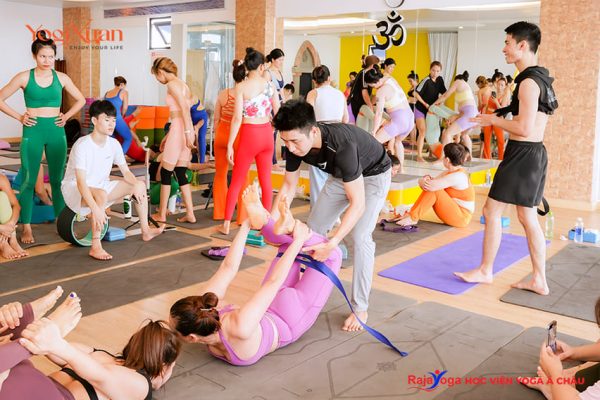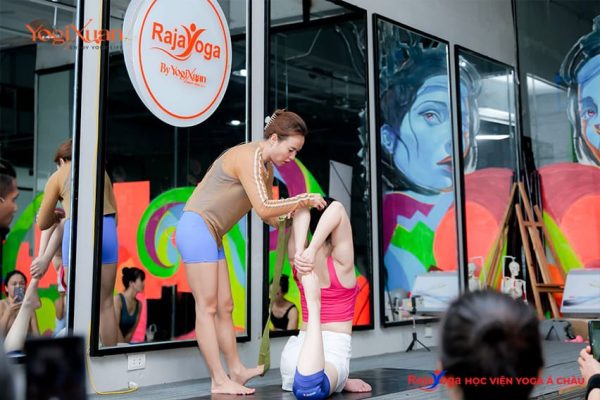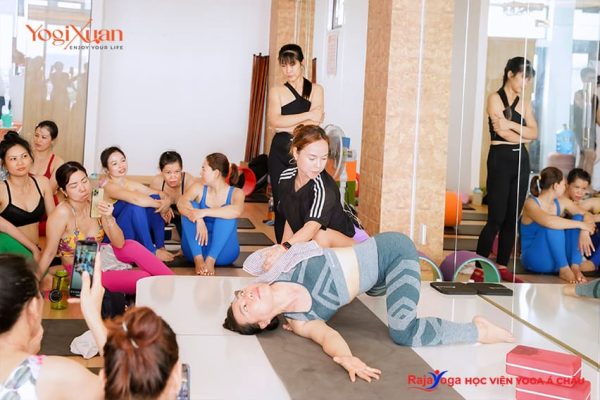Touching with Empathy is also known as the Lifting and Adjustment technique in Yoga.
Touching with empathy and respect is an important element in yoga. This technique helps students feel supported without being intrusive. Empathy and respect not only improve training effectiveness but also create a positive relationship between coach and student.

Basic Concepts of Yoga Touch
Touching is when the coach intervenes in the student’s posture to improve accuracy. This is different from self-regulation, where students self-correct. Empathy in touch ensures that the intervention is gentle and appropriate to the student’s emotions.
The Importance of Empathy in Touch
Applying empathy when touching creates connection and trust with students. It helps students feel safe and comfortable. When the coach understands and responds to the student’s emotions, the student will more easily open up and participate in the exercise.

How to Do Touching with Respect
To perform respectful touch-ups, it is necessary to communicate clearly with the student. Use lightness and delicacy in every movement. Make adjustments so that students feel respected and not pressured. Always ask for students’ opinions before making edits.

Real-Life Example of Empathic Touch
When assisting beginners, gently guide them through correct posture. In case the student has health problems, adjust the posture with special attention to how they feel. These examples show empathy and respect in yoga practice.

Things to Keep in Mind When Doing Empathic Touching
Make sure you always listen to feedback from your students and don’t invade their personal space. Gauge your students’ emotions and reactions to adjust your methods. Empathy helps create a safe and effective training environment.

Training and Developing Empathy Skills in Touch
To develop your empathy skills, take courses and read books about touch. Workshops and in-depth training are also valuable resources. Students and coaches can improve their skills through continuous practice and learning.

Evaluating and Improving Touch Techniques
Collect feedback from students to understand the effectiveness of your touch-up method. Apply feedback to improve technique and better meet student needs. Continuous improvement helps improve classroom quality and student satisfaction.

Frequently Asked Questions (FAQ)
Does touch and correction always require empathy?
Yes, empathy ensures that students feel safe and supported. How do you know when to change your touch method?
Based on students’ feedback and emotions, adjust the method accordingly.

Conclude
Touching with empathy and respect is an important technique in yoga. It not only improves workout efficiency but also builds positive relationships with students. Coaches should always look for ways to develop empathy skills to improve the quality of the classroom.

Follow Yogi Xuan’s fan page to get updates on:
- Professional yoga instructor training courses
- Workshop “Backbends“
- Workshop “Cham Chinh Chat“
- Tea Meditation Event – A Journey of Healing from Within
- “Applying AI in Yoga” events across the North, Central, and South in Viet Nam
- Upcoming exciting events.




